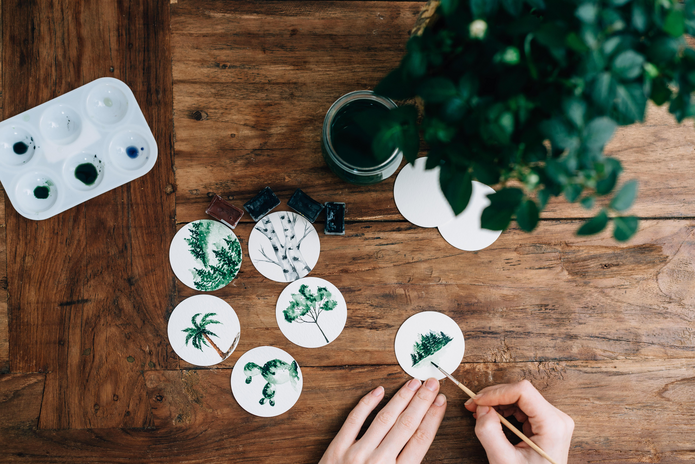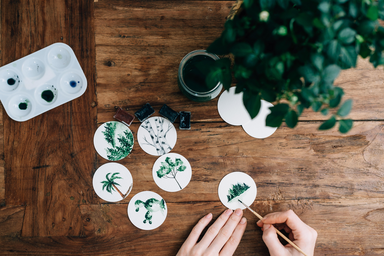Edited by – Sahana Inuganti
Finals having soaked every shred of motivation in me, writing this article felt like an impossible task. I was staring blankly at my wall, waiting for inspiration to strike, when my eyes fell on the cuckoo clock in my room. My parents gave it to me as a birthday present a few years back. I remember being extremely excited about having it in my room and I loved it to bits. For me, it was beyond fascinating that the little birds knew exactly when to make their presence or the tiny door that sheltered them would make way for their grand cuckooing every time the minute hand struck twelve or how something as ordinary as a clock could be this carefully crafted. As beautiful as it was, I soon realised it was hardly of any use to me. The pendulum’s tick-tock was annoyingly loud and my relationship with the birds has been strained ever since they decided it was a good idea to start cuckoo-ing while I was watching ‘The Ring’. Now, don’t get me wrong. I am eternally grateful for it because it is perhaps the most aesthetic thing in my room and I still have it hanging on my wall— only the pendulum doesn’t oscillate anymore and the door behind which the birds reside has been locked for as long as I can remember. It is, in fact, this very aesthetic value (which, now, is the only value) it holds that got me thinking. If you think about aesthetics from an evolutionary point of view, it seems like a huge waste of time, energy and resources. Why then is it so innate to human beings that someone back in 1969 spent additional time, labour and wood to craft the first cuckoo clock, only because it is pleasing to the senses?
On going into the depths of the internet, I found out that scientists working in the field of neuroaesthetics (yes, it exists) conducted an experiment on a bunch of people in which they showed them a few objects. The participants were asked to rate these objects on the basis of their aesthetic appearance. Then, using micro neuro-imaging (basically, taking a candid picture of the brain) they found out which parts of the brain light up when they see these objects. Turns out that the part which lights up— the amygdala— usually reacts to, say, snake sightings, awful smells, Bigg Boss- anything disgusting or capable of causing pain. In short, the portion that typically senses fear is the one that also senses aesthetics. As absurd as that is, scientists figured that this portion of the brain is responsible for sensing a number of high-intensity emotions . It also plays a huge role in deciding what’s good for us and what is not and helps develop our perception. It then turns out that our love for art and aesthetics is actually quite useful as it helps develop our perceptual skill. This, like any other skill, is honed through practice. The more we engage with aesthetics, the more we sensitise our brain and the visual system to complexities around us. So, next time your mom tells you that your phone is the problem, you can let her know that scrolling through Pinterest, looking for ‘aesthetic room decor’ that you’ll never buy, happens to be quite important from an evolutionary standpoint.
However, all the newfound respect for my brain, went away as quickly as it was acquired when I came across the phenomenon of the ‘aesthetic halo effect’. This is basically a correlation that our brain tends to establish between aesthetics and virtues of trustworthiness. Having started uni-life online, I might have slept through classes, but I did learn how judgemental we can be. When you look at someone’s zoom background or even their dressing sense or how “conventionally attractive” they are, and try to figure out what kind of a person they must be, it’s largely the ‘aesthetic halo effect’ ( or should I say, aesthetic shallow effect) at work. Trust the human brain to be judgemental by default, no?
Apparently some artists and sculptors have taken advantage of this. Take Nefertiti’s bust for example. It is said that the sculpture is far from what the queen actually looked like and the sculptor, Thutmose, in all probability, wasn’t striving for realism. The sculpture is extremely symmetric and is often described as an ‘icon of feminine beauty’. Conjecture goes that Thutmose understood the human tendency of associating high virtues with something that pleases their eye and would also transfer those virtues to the artist. It baffles me how we are trying to understand the artist’s intent behind creating the piece of art by making assumptions about what he wanted us to think. This immediately reminded me of the classic “they know that we know that they know” from ‘Friends’. Anyway, I’ll leave you with food for thought, something I’ve been toying with for a while now— if our perception really does dominate so much of what we see, hear and feel, is it possible to keep it aside and actually figure out what the artist’s intent is?

